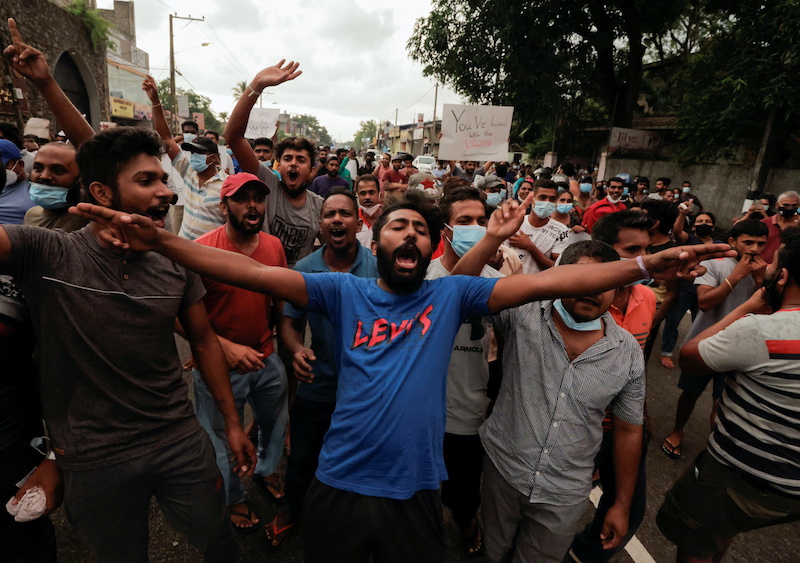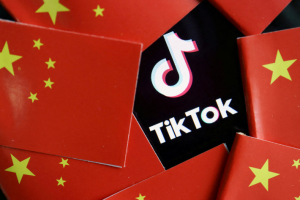Sri Lanka is experiencing its worst financial crisis since gaining independence in 1948 with some claiming one of the prime causes of its economic implosion is China’s debt-trap diplomacy.
Since the turn of the century, $11.7 billion of Chinese lending has flowed into Sri Lanka to finance roads, power plants, a port and an international airport, according to a Wall Street Journal (WSJ) report.
Some, like the Lakvijaya Power Plant, helped provide electricity to rural, underdeveloped areas, while others, like the deep-water port in Hambantota – funded by over $1 billion of Chinese loans – were meant to boost trade and economic development.
Also on AF: Kids Turn to China’s TikTok as West’s YouTube Falls Behind
But none of these projects proved as successful as the government had hoped and Sri Lanka was forced to seek more financial assistance from China. By 2019 China had become Sri Lanka’s largest single creditor and, after persuading Colombo to decline an IMF offer of help, pumped in another $3 billion of new credits in 2020 and 2021, the WSJ report says.
“While it is sensible to borrow money for infrastructural projects that are going to be economically viable, Sri Lanka borrowed from China for infrastructure projects that were white elephants,” said Gareth Price, a senior research fellow at Chatham House, who leads the London-based policy institute’s research on South Asia.
Not China’s Debt-Trap Diplomacy
But while the China relationship undoubtedly contributed to the current crisis, at its root is long-term economic mismanagement. That left the nation exposed to the effects of both the Covid-19 pandemic and the Ukraine war. Starting under previous administrations, the problems only got worse under the regime of former President Gotabaya Rajapaksa, who fled for Singapore last week after violent protests.
“The economic crisis is the product of the historical imbalances in the economic structure and the misguided policies of various governments,” said Rahul Roy-Chaudhury, Senior Fellow for South Asia at the London-based International Institute for Strategic Studies.
Critics of the Sri Lankan government though also accept the tourism-dependent nation has had to cope with some tough breaks over the last two decades, including its emergence from a long and brutal civil war that drained its coffers, terrorist attacks, the 2008 global financial crisis and the Covid pandemic.
Boom and Bust
After emerging from a 26-year-long civil war in 2009, when it received a $2.6 billion loan from the International Monetary Fund, the post-war euphoria fuelled consumer spending, pushing economic growth to 9.2% in 2012.
In 2013, however, its GDP growth rate nearly halved as commodity prices fell, exports slowed and imports rose.
The Easter bombings in Colombo in April 2019, which killed 253 people, hurt tourism, an industry that accounts for 10% of its GDP.
The Rajapaksa-led government that assumed power in 2019 implemented populist tax cuts that further affected government finances while shrinking foreign reserves led to reductions in the imports of fuel, food and medicines.
The island nation’s tourism-dependent economy was hammered again by the Covid-19 pandemic, which also impacted the Sri Lankans who sent money home from jobs overseas.
Things were worsened last year when the government banned chemical fertiliser imports to conserve foreign exchange reserves, dealing another blow to the economy by hurting the tea industry and paddy crops.
Russia’s invasion of Ukraine was the final blow when it drove up food and oil prices global, leaving Sri Lanka’s unable to afford crucial imports.
What Happens Next?
Sri Lanka’s current forex reserves are only $25 million, barely enough to cover a few days’ worth of imports, let alone repay its $50 billion in external debts, according to reports citing the Finance Ministry.
Headline inflation hit 54.6% last month and the central bank has warned that it could rise to 70% in coming months. Prime Minister Ranil Wickremesinghe declared an emergency on Sunday.
The IMF, which visited the country in late June, said that it is waiting for the dust to settle ahead of the resumption of an IMF-supported programme. China said last week that it will support Sri Lanka through that programme.
“China, the West and India should now come forward to bail Sri Lanka out,” says Chatham House’s Price. “Helping the debt-ridden nation will be a good opportunity for China to demonstrate that it is not following a debt-trap diplomacy.”
- By Indrajit Basu
Read More:
Sri Lanka President Flees, Protesters Storm PM’s Office
Sri Lanka Hikes Interest Rates to 21-Year High to Stem Inflation
India Pledges Deeper Support for Struggling Sri Lanka
Sri Lanka Creditors Form Group for Debt Restructuring Talks
























